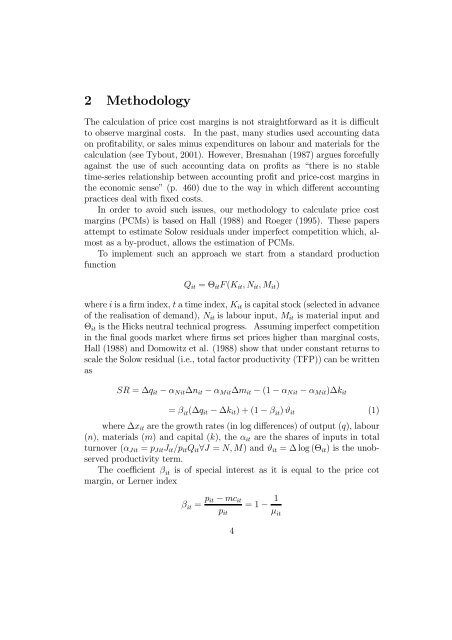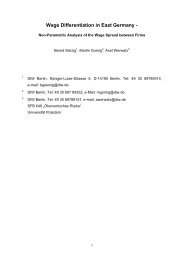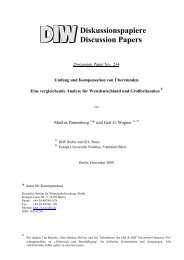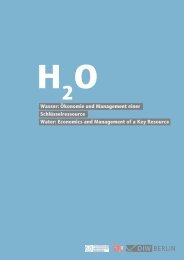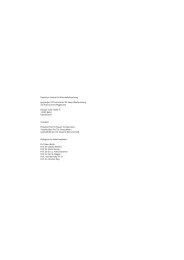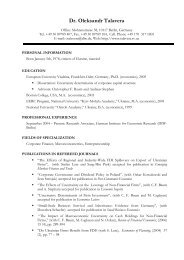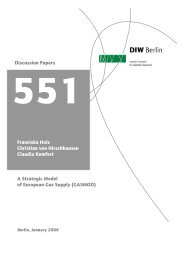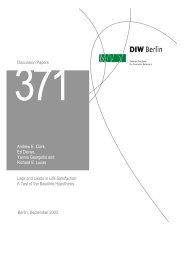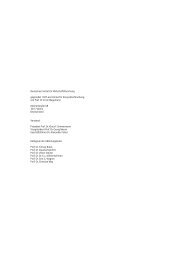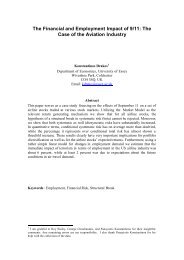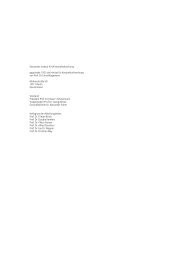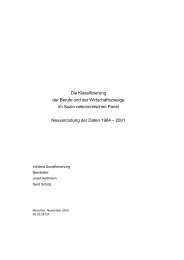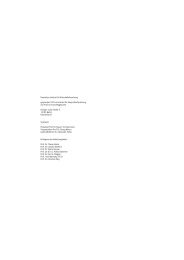Holger Görg and Frederic Warzynski Price cost margins ... - DIW Berlin
Holger Görg and Frederic Warzynski Price cost margins ... - DIW Berlin
Holger Görg and Frederic Warzynski Price cost margins ... - DIW Berlin
You also want an ePaper? Increase the reach of your titles
YUMPU automatically turns print PDFs into web optimized ePapers that Google loves.
2 Methodology<br />
The calculation of price <strong>cost</strong> <strong>margins</strong> is not straightforward as it is difficult<br />
to observe marginal <strong>cost</strong>s. In the past, many studies used accounting data<br />
on profitability, or sales minus expenditures on labour <strong>and</strong> materials for the<br />
calculation (see Tybout, 2001). However, Bresnahan (1987) argues forcefully<br />
against the use of such accounting data on profits as “there is no stable<br />
time-series relationship between accounting profit <strong>and</strong> price-<strong>cost</strong> <strong>margins</strong> in<br />
the economic sense” (p. 460) due to the way in which different accounting<br />
practices deal with fixed <strong>cost</strong>s.<br />
In order to avoid such issues, our methodology to calculate price <strong>cost</strong><br />
<strong>margins</strong> (PCMs) is based on Hall (1988) <strong>and</strong> Roeger (1995). These papers<br />
attempt to estimate Solow residuals under imperfect competition which, almost<br />
as a by-product, allows the estimation of PCMs.<br />
To implement such an approach we start from a st<strong>and</strong>ard production<br />
function<br />
Qit = ΘitF (Kit,Nit,Mit)<br />
where i is a firm index, t atimeindex,Kit is capital stock (selected in advance<br />
of the realisation of dem<strong>and</strong>), Nit is labour input, Mit is material input <strong>and</strong><br />
Θit is the Hicks neutral technical progress. Assuming imperfect competition<br />
in the final goods market where firms set prices higher than marginal <strong>cost</strong>s,<br />
Hall (1988) <strong>and</strong> Domowitz et al. (1988) show that under constant returns to<br />
scale the Solow residual (i.e., total factor productivity (TFP)) can be written<br />
as<br />
SR = ∆qit − αNit∆nit − αMit∆mit − (1 − αNit − αMit)∆kit<br />
= β it(∆qit − ∆kit)+(1− β it) ϑit<br />
where ∆xit are the growth rates (in log differences) of output (q), labour<br />
(n), materials (m) <strong>and</strong>capital(k), the αit are the shares of inputs in total<br />
turnover (αJit = pJitJit/pitQit∀J = N,M) <strong>and</strong>ϑit = ∆ log (Θit) is the unobserved<br />
productivity term.<br />
The coefficient β it is of special interest as it is equal to the price cot<br />
margin,orLernerindex<br />
β it = pit − mcit<br />
pit<br />
4<br />
=1− 1<br />
µ it<br />
(1)


